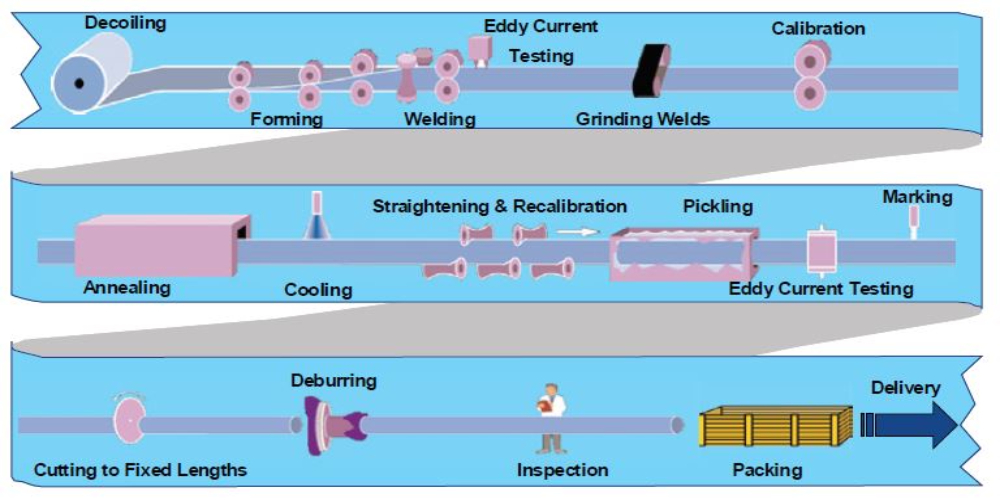Erw vs Spiral Pipe : Difference
Pipes are a fundamental component in various structures, serving critical roles in plumbing, HVAC systems, and fluid exchange applications. In industries like oil & gas and petrochemicals, pipes play a crucial role in transferring crude oil products. When it comes to pipeline networks and selecting the right pipes for the job, the debate between ERW pipes and spiral pipes emerges due to their unique characteristics, including pressure resistance and performance.
Let’s delve into the essential differences between these two pipe types, from their manufacturing processes to their pressure resistance and overall performance.
Manufacturing Process:
The production methods for ERW pipes and spiral pipes differ significantly. ERW pipes start with a strip or coil of steel, which is hot-rolled through a roller machine to create a gauged metal with visible ends. Electric Resistance Welding then joins these ends using electric current, both inside and outside the pipe, without the need for flux or weld filler. After joining, the pipe undergoes primary ultrasonic inspection and post-processing techniques like annealing and cooling to enhance its microstructure and ductility. Finally, the ERW pipe is cut to size and straightened for uniformity.

Conversely, spiral pipes begin with an unrolled steel coil unwound using a roller machine. Spiral pipes require a welding wire or filler to fuse the metals together while forming a helix-like structure. The ends of the strips are joined using a submerged arc welding technique, and each welded portion is inspected to ensure there are no defects. Similar to ERW pipes, spiral pipes undergo ultrasonic testing and other non-destructive tests to examine their physical properties, weld quality, and chemical composition.
Pressure Resistance:
During production and end-use, both ERW pipes and spiral pipes experience residual stress, which refers to stress present on the pipes even in the absence of external forces. ERW pipes tend to have lower residual stress due to the longitudinal and straight seam electric welding, as well as the post-processing methods applied. This is critical for storage and use since the single seam does not compromise the pipe’s quality.
In contrast, the spiral rotation in spiral pipes may lead to higher residual stress, potentially pushing the pipe beyond its yield limit. The presence of multiple seams can significantly impact the pipe’s load-bearing capabilities, especially when subjected to tensile, circumferential stresses, and other forces. Additionally, the use of fillers and welding rods in spiral pipes may introduce weld defects and physical deformations.
Performance:
Considering the above factors, ERW pipes tend to outperform spiral pipes in various applications. The single seam in ERW pipes allows for a consistent flow of different fluids, reducing the likelihood of leaks and bursts. In contrast, the multiple seams in spiral pipes can lead to inconsistent pressure changes, affecting specific portions or the entire pipe.
Furthermore, the multiple welded seams in spiral pipes may cause issues with calcium build-ups and chemical deposits, compromising the pipe’s corrosion resistance and longevity. ERW pipes, lacking weld filler raw materials and flux, offer more consistent weld quality, better surface finish, and improved corrosion resistance.
Key Takeaway:
The choice between ERW pipes and spiral pipes comes down to their manufacturing process, pressure resistance, quality, and overall performance. ERW pipes, produced through electric resistance welding from rolled steel coils or strips, offer enhanced performance and consistency compared to spiral pipes with submerged arc welding on multiple weld seams.
Looking for high-quality Spiral pipes, ERW pipes and Seamless Pipe? Kalpataru Piping Solutions selection can meet your industry’s pipeline supply and requirements. Click here to learn more!
Comments
Post a Comment